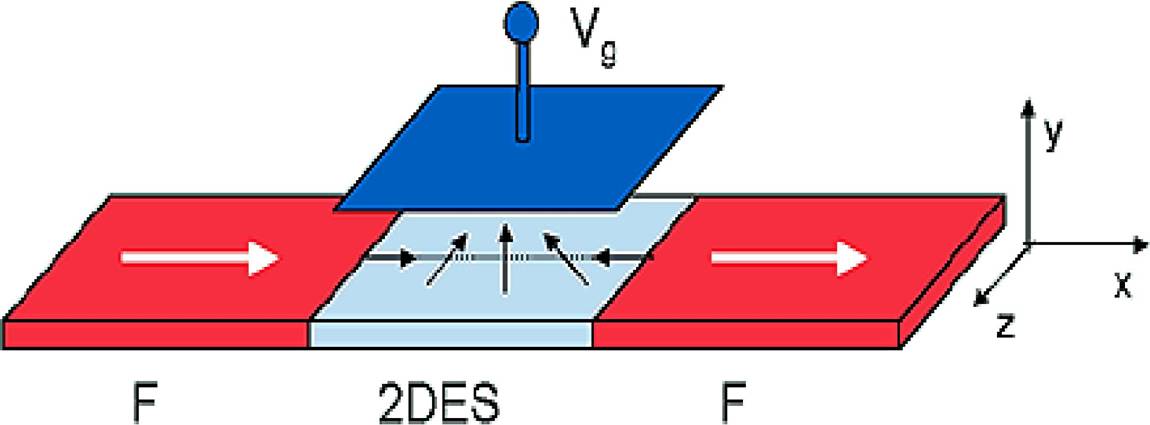In recent years, considerable work has been devoted to the study of diluted magnetic semiconductors. These are semiconductors that are doped with ions that have a net spin. The interaction among these spins leads to a ferromagnetic state at low temperatures. These type of materials have a lattice structure similar to that of the undoped semiconductor, at least for the diluted magnetic case. This similarity provides a good lattice match between the doped and undoped cases, allowing for the potential preparation of devices such as the one sketched in the figure. This is a spin transistor, as envisioned many years ago by Datta, where a ferromagnetic material allows for the injection of a current into a semiconductor where electric fields produce a spin precession. The field of DMS received a considerable boost when a few years ago Ohno doped Mn ions into GaAs, and found Curie temperature above 100K. This is not yet sufficient for applications, but progress in this area is rapid and room temperature ferromagnetism could be achieved even with considerable dilution. In the Theory Groups at the CMSD (ORNL) and UT Physics Department, theoretical studies are carried out in this context, using both analytical (dynamical mean-field theory) and numerical (Monte Carlo) simulations. In addition, experimentalists at UT/ORNL are studying these DMS materials as well. Many similarities with Mn oxide investigations have been unveiled, and procedures to increase the critical temperatures have been proposed.
